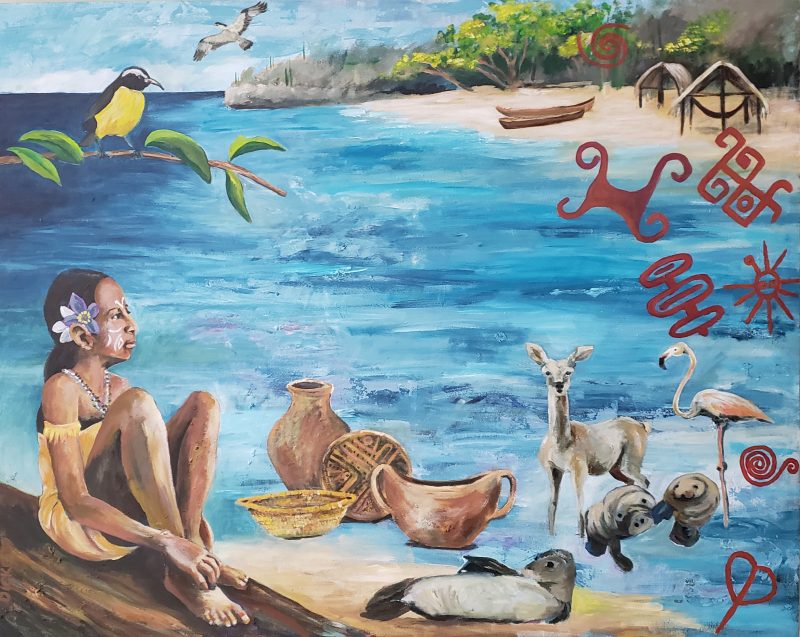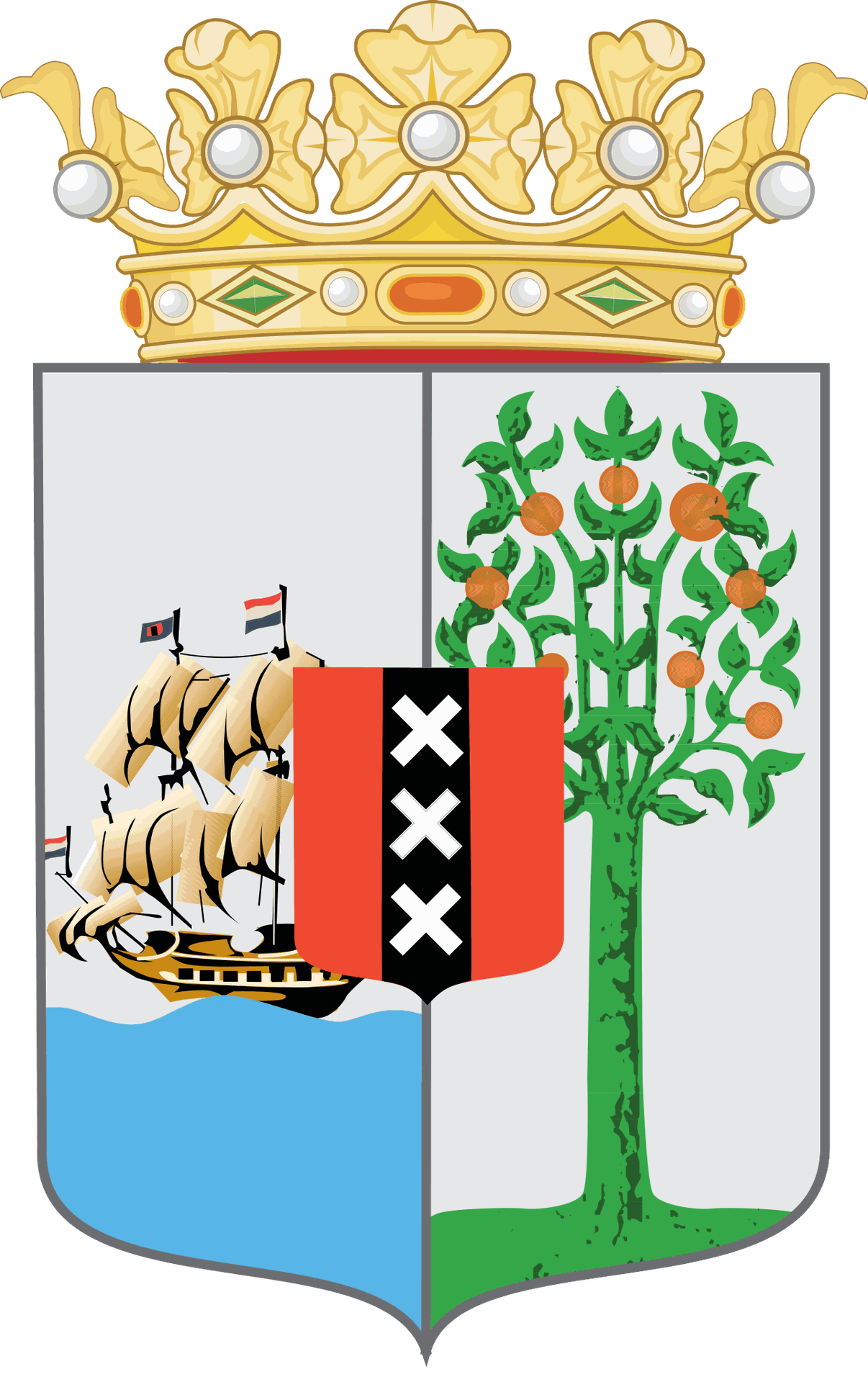Agriculture in the Indian and Spanish Period
(Published in the newspaper Amigoe on the 26th of February 2025)
Curaçao used to have a lot of plantations. You can still see the old country houses on the island. This series is all about the plantation farms. We’ll talk about farming in the Indian and Spanish times, how plantations were set up, how water was managed on the plantations, the country houses and outbuildings, what was grown on the plantations, and how the plantations were run. In this first part, we’ll focus on how the Indians and Spaniards farmed.
The Indian time
It seems like Indians have been living on Curaçao for a really long time, like 800 years! Archaeologists have found evidence of Indian villages in the Savaan, San Juan, and Santa Cruz areas. Historian Hartog mentioned that there were a total of 22 small Indian settlements later on. But here’s the thing, not all of them were occupied at the same time. And guess what? Some of these settlements weren’t near water sources, which means the Indians probably had wells already. Oh, and the groundwater level was higher back then than it is now. Pretty cool, right?
During this time, the Indians were busy making pottery and farming. They grew corn, cassava, and other yummy fruits. They were part of the Caquetio group, and we think they spoke a language related to the Arawak family. We’ve found shell heaps from this period, and in them, we discovered tools like axes and grinding stones. Oh, and guess what? We also found pottery plates for making corn and cassava cakes! We have a theory that the Curaçao white-tailed deer was brought to Curaçao by the Indians and became a local animal. But, the number of Indians on Curaçao wasn’t huge.

From the Canon of Curaçao: "Selma" - Painting from Annemieke Dicke, "The original inhabitants of Curacao" - from the exposition "Imagined Past" - 50 years National Archive Curacao" - 2019
The Spanish time
In 1499, the Spanish discovered Curaçao during an expedition led by Alonso de Ojeda. Alongside them were Amerigo Vespucci and Juan de la Cosa, a skilled cartographer and navigator. Initially, Vespucci named Curaçao the “Island of the Giants” (Isla de los Gigantes). The Spanish claimed the island as their own. At the time, Curaçao was home to several Indian villages. In 1513, Diego Colon, the viceroy of Hispaniola, Aruba, Curaçao, and Bonaire, made an official decision to label certain islands as “useless” or “islas inútiles.” This meant that no precious metals were found on these islands, and they were deemed unsuitable for agriculture. However, it also opened the door for the capture and transportation of Indians to Hispaniola, where there was a shortage of labor at the time.
In 1526, Juan de Ampués, the governor of Venezuela, was tasked with repopulating Curaçao and turning it into a trading hub for paintwood and skins. His son-in-law, Lázaro Bejarano, took livestock farming to the next level on Curaçao. Later, the island became a stopover for seafarers and pirates. To boost livestock farming, cattle, goats, and pigs were brought to Curaçao. To make leather from skins, the pods of the Dividivi tree were used. These pods contain a tannin. Horses were also imported. Paintwood came from the Braziel trees (Caesalpinia echinata). A red pigment was extracted from painted wood, which could then be used to color textiles.
The Spanish decided to settle at the Santa Barbara Bay. The first church on Curaçao was built here in 1527. Around 1600, a village called Santa Anna was built near the Schottegat. That village also had a church.
The conquest of Curaçao by the Dutch
In 1634, Van Walbeeck and Le Grand led a daring mission to reclaim Curaçao from the Spanish. This island had been under Spanish rule for nearly a century. The board of the West India Company (WIC), known as the Heeren 19, made the bold decision to seize Curaçao during a meeting on April 6th. Their primary objective was to establish a strategic maritime base on the coast of South America and the Caribbean. But that wasn’t all - they also needed access to salt and paint wood, which were crucial resources for their endeavors.
Jan Otzen gave the Heeren 19 information about Curaçao. He said it was an island with a private port, but mostly rocks and cliffs that kept enemy ships away. Apparently, Otzen was a bit of a dreamer because Curaçao was tough to defend because of all the open bays on the south side. And getting into St. Annabaai wasn’t easy either, with that strong current at the entrance. But the Heeren 19 didn't know that and proceeded.
The command is given on April 8, 1634 to Johannes van Walbeeck as leader of the expedition with Pierre le Grand as commander of the soldiers. All five WIC chambers contributed proportionally. In total, the expedition consisted of 6 ships with 180 sailors and 225 soldiers. The admiral's of the fleet was the Groot-Hoorn, a merchant ship of 700 tons. On May 4, the squadron sailed. On July 6, they arrived at Curaçao. However, entering the Annabaai failed due to the strong current. On July 29, a second attempt succeeded. What did van Walbeeck find when he arrived in Curaçao?
Back then, there were around 30 Spaniards and 400 Indians living on the island. Most of the food they grew was for themselves. When the Dutch came they found orange trees (laraha’s), lemon bushes, pomegranate trees, bacoven, sugar cane, sorghum (Maishi chikitu), tobacco, and various root crops. Van Walbeeck mentioned several gardens. There was also a tannery. North of Ascencion was a salt pan with the Indian name "Charomba". Van Walbeeck said there were “salty inland waters” on the island.

Laraha tree on the coat of arms of Curaçao
After van Walbeeck arrived on Curaçao, a game of cat and mouse started with the Spaniards led by Lopez de Morla. Van Walbeeck set up his camp near what’s now Pos Kabai. The Spaniards called this place "La Higuera", the fig tree. It was close to the village of Santa Ana. Guess what? They found water here! This was huge because since 1630, the island had been hit by a terrible drought. After van Walbeeck secured the island on land, two weeks later, on August 11, they started building a fort on the Punt (now called Punda) to protect the island from the sea. This was like the first step towards the water fort.
After some skirmishes with the Spanish in July and August, the Spanish finally surrendered in San Juan on August 21, 1634. This agreement was called the “Accord of St. Jan.” The Spanish and a lot of the Indians were then sent to the mainland of Venezuela.
The Indians grew their own food, while the Spaniards did the same but also traded skins, paint wood, and other things. In the next part, we’ll learn how the first plantations were started during the time of the West India Company.
1. Agriculture in the Indian and Spanish Period